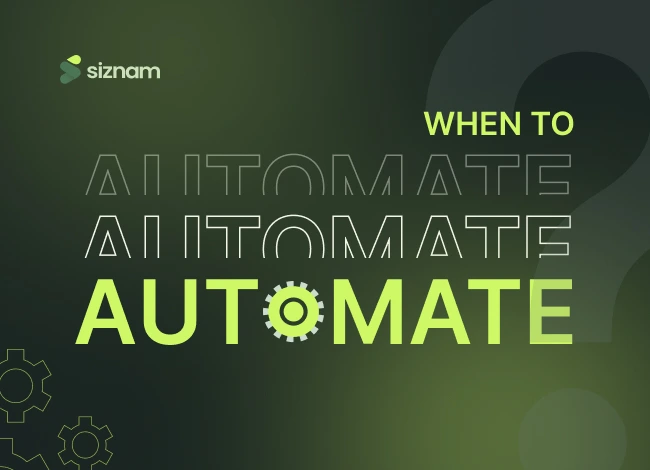What is Automation?
Automation Testing is like having a helpful computer buddy who does testing tasks for you. It uses special software tools to run a bunch of test cases. On the flip side, Manual Testing is done by people sitting at a computer, carefully following test steps.
The automation tool can even put data into the software being tested. It can compare expected and actual results, and give you detailed reports. But, it does need some upfront investment of money and resources.
When you’re building software, you often need to test it over and over. With QA Automation Testing, you can record these tests and play them back whenever you need. Once it’s set up, no more human work is needed. This makes testing faster and gives you more value for your investment.
The goal of automation testing isn’t to replace humans but to help them. It’s about using all types of automation testing to do the repetitive tests, so humans can focus on the creative and complex stuff. So, think of automation as a teammate that makes your testing life easier!
When do tests need automation?
Considering automation in testing is a smart move if you value benefits. It benefits in speeding up development, improving product quality, or cutting costs. When attempting to maximize both time and cost resources, the justification for adopting automation testing becomes clear. Its broad applicability to various SQA firms emphasizes its crucial importance. Testing extends beyond software development to include APIs, security evaluations, and, most importantly, web service automation testing. This importance is increased, especially when evaluating new software, especially in large projects. An analogous distinction appears when it comes to the types of automation testing. Various forms of automation testing meet different requirements, just as automation is perfect for repetitive jobs and performance assessments. Each version provides a specific solution, from unit testing to integration and end-to-end testing. A comprehensive quality assurance process benefits from the interaction between manual and automated testing as well as the proper automation testing type selection. The question may arise when to shift from manual to automated testing. You can start by identifying tasks that would benefit the most and calculating the return on investment.
To figure out if automated testing is a good fit, there are factors to consider:
- Complex or time-consuming tasks
- Tests that are tough or impossible to do manually
- Repetitive tasks
- Frequent test runs
- Basic smoke tests
- Functional and performance testing
- In-depth GUI testing
- Critical components and high-risk cases
- Cross-platform testing
By analyzing these aspects, you’ll know whether automated testing is the right choice for your scenario.
When not to Automate Testing?
In the realm of software testing, the choice between automated and manual testing approaches is a crucial one. Automated testing promises efficiency and precision. It’s important to recognize that not all scenarios are best suited for QA Automation testing. Explore when manual testing excels, revealing its relevance in evolving software quality assurance.
- Unique Challenges Call for a Human Touch
Automated testing handles repetition, while manual testing excels in human judgment scenarios. For instance, complex assessments like window behavior often challenge automation. The human eye identifies issues, crucial for exploration, user experience, and appearance details.
- Balancing Investment and Returns
It’s essential to consider the investment required for automated testing tools and resources. Automation testing offers long-term returns, but the initial investment can be significant. Manual testing is cost-effective for simpler tests with fewer resources. For example, testing basic forms or unused modules is efficiently done manually.
- Tailored Attention for Strategic Development
Certain applications demand a specific touch that only human testers can provide. For crucial business functions, strategic modules, or complex features, manual testing is essential. Experts create detailed test cases, addressing unique aspects and vulnerabilities attentively.
- Putting User Experience First
User experience, an area where the human eye excels, is crucial to any application’s success. Aspects like language, resolution, endurance, and formatting are swiftly identified by human testers. In contrast, software test automation may consume considerable time to achieve similar results. It is suggested that you leave this area in the expert hands of human testers to guarantee a first-rate user experience.
- Tackling Complexity and Variety
QA Automation testing excels in routines but falters with complexity. Mobile testing, with tasks like Wi-Fi, app multitasking, and calls, favors manual adaptability. In intricate scenarios, manual testing handles complexity beyond automation’s reach.
- A Closer Look at Quality Control
Manual testing shines in validating overall application quality. Automated testing focuses on specific outputs according to predefined test cases. Human testers navigate diverse workflows, swiftly identifying successes and failures across scenarios. Quality control thrives when it’s entrusted to human judgment and experience.
- When ROI Doesn’t Add Up
Return on investment (ROI) plays a vital role in deciding whether to automate or manually test. For basic apps with limited modules, manual testing is resource-efficient. For software test automation, when complexity doesn’t justify automation testing, manual testing is adequate.
Advantages of Automated Processes over Manual Ones
Automation transforms industries, replacing manual tasks with streamlined workflows for efficiency. The advantages of embracing automated processes are numerous and impactful. Here are some key benefits that highlight the superiority of intelligent automation solutions over manual methods:
Enhanced Efficiency: Automated processes are designed to execute tasks consistently and without interruptions. They operate around the clock, minimizing manual input and enhancing overall efficiency. This leads to faster task completion and improved productivity.
Reduced Human Error: Manual tasks prone to errors from fatigue or distractions. Automation boosts accuracy, and reliability in precise tasks, reducing human errors.
Cost Savings: Automated setup costs upfront, but long-term gains are cost-effective. Automation cuts supervision, labor, and expenses, yielding significant savings.
Consistency and Standardization: Automated processes follow rules consistently, ensuring uniform tasks. Standardization improves quality and reduces manual variations.
Scalability: As operations grow, manual processes can become increasingly challenging to manage. Automation scales effortlessly, letting businesses manage heavier workloads without sacrificing efficiency or quality.
Improved Data Management: Automated systems can efficiently gather, process, and analyze data. This fosters precise insights and informed decisions, crucial in data-driven sectors.
Faster Turnaround: Automated processes execute tasks at a faster pace compared to manual methods. This quick turnaround time enhances customer satisfaction and responsiveness to market demands.
Risk Reduction: In safety-focused industries, automation reduces human exposure to risky environments. This leads to improved workplace safety and risk management.
Audit Trails and Compliance: Automation produces detailed logs, forming a traceable audit trail. This feature is beneficial for regulatory compliance and internal quality control.
Innovation and Adaptability: Automated processes built on flexible platforms can adapt to changing requirements. This enables organizations to innovate and stay competitive in dynamic markets.
Resource Optimization: Removing repetitive tasks lets employees focus on creative, strategic, value-added activities. That always contributes to organizational growth.
In a fast-changing technological area, automation offers more than convenience. It fuels excellence, and promotes innovation, empowering competitive success. Embrace it for efficiency, accuracy, and growth.
Conclusion
Automated testing is really helpful for doing the same tasks again and again, saving time, and quickly finding problems. It’s awesome for big projects, hard math stuff, and when the code keeps changing a lot.
But sometimes, it’s not the best pick. When we want to explore the software and find new problems creatively, that’s where humans are better. Checking how users feel or making judgments that depend on personal opinions. When things are changing fast or at the beginning of a project, manual testing is more flexible. Things like testing how easy the software is to use or making sure it looks good need, real people, to look at them.
Balancing Both
In basic terms, a strong QA strategy is ensured by the cooperation of automated and manual testing. An effective QA plan incorporates both automated and manual testing. Automation excels in repetitions, regression, and performance. Whereas manual thrives in exploration, UX, and creative adaptability. So, using both automated and manual testing is smart. Automated testing is awesome for repeating tasks and checking performance. Manual testing excels in exploration, user understanding, and adaptability to change. Deciding when to use each one helps make sure the software is high quality and works well for the people who use it. Balance comes from evaluating project needs, stage, and analysis depth. Harmonizing both approaches yields comprehensive, efficient QA, ensuring reliable, user-friendly software.
People Also Ask
Automated testing is great for tasks that need to be repeated many times, as it saves time and catches problems quickly.
It’s best for big projects, when calculations are complex, and when the code is changing often. It’s also perfect for continuous delivery, where new updates are sent out frequently.
Automated testing might not be the best for exploring software creatively to find new issues. It’s also not great for judging how users feel or for tasks that depend on personal opinions. When things are changing rapidly or at the beginning of a project, manual testing is more adaptable.
Manual testing is good at exploring software in creative ways to discover new problems. Moreover, it aids in grasping user experience and tasks requiring a human touch, like usability checks.
Manual testing is preferred when a human’s creativity is needed to explore the software deeply. Also ideal for assessing user experience, subjective judgments, and dynamic situations.
Absolutely! Both approaches complement each other. Automated testing can handle repetitive tasks and performance checks, while manual testing brings creativity and adaptability. Using both ensures better software quality.
Manual testing is crucial for human insight. Especially for addressing exploratory tasks, user experience, and complex scenarios. It offers a strategic touch, tackles unique challenges, and ensures comprehensive testing.
By using both approaches, you cover a wider range of testing needs. This results in higher software quality and a better user experience.
It depends on the task and situation. If it’s a repetitive task or needs quick problem detection, go for automated testing. If it requires creativity, understanding user experience, or adapting to changes, manual testing is the way to go.
Automated testing can be faster for repetitive tasks and certain types of testing. Yet, manual testing is quicker for creative, adaptable, judgment-driven tasks.
Combining both methods broadens the scope of automation testing as well as manual testing, enhancing software insights. It leads to a more comprehensive understanding of the software’s strengths and weaknesses. This approach boosts quality and user experience.







What do you think?
Great insights on the pros and cons of automated and manual testing! I completely agree that automated testing is a time-saver and essential for handling repetitive tasks, large projects, and complex algorithms. However, as you pointed out, it’s not a one-size-fits-all solution. Manual testing is irreplaceable when it comes to exploratory testing, user experience evaluation, and subjective assessments. It’s interesting to consider how the flexibility and creativity of manual testing complement the efficiency of automation.
You’re right—automated testing is a huge time-saver for repetitive tasks and big projects, while manual testing is crucial for exploring and evaluating user experience. They really do complement each other.
How do you usually decide when to use automated versus manual testing? Any tips for finding the right balance?
Thanks for your thoughtful question! I’m glad you appreciated the insights on automated and manual testing. Deciding when to use each approach depends on the project’s specific needs and goals. Here are some tips for finding the right balance:
– Start with automated testing for repetitive tasks, regression testing, and large-scale projects.
– Use manual testing for exploratory testing, user experience evaluation, and subjective assessments.
– Consider the complexity of the test cases and the potential return on investment for automation.
– Evaluate the testing timeline and resources available.
– Continuously monitor and adjust the balance between automated and manual testing as the project evolves.
By considering these factors, you can create a harmonious blend of automated and manual testing that maximizes efficiency and effectiveness.
What about you? How do you decide when to use automated versus manual testing in your projects?
Very interesting topic, thank you for putting up.
Thank you for your interest in our blog! We’re glad you found the topic interesting. If you have any questions or would like to discuss further, please don’t hesitate to reach out. We’d love to hear your thoughts and feedback!